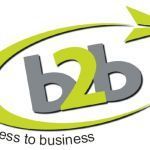Erik Qualman's Blog, page 679
December 12, 2011
YouTube for Schools Launches

Many schools block YouTube in the classroom. This is a shame since there is so much good educational content between the Mentos and backyard wrestling videos. Today, YouTube now provides a solution to this dilemma.
As reported by ubergizmo YouTube for Schools is a network setting that school administrators can turn on to grant access only to the educational content from YouTube EDU. This means videos from over 600 of YouTube's education partners like the Smithsonian, TED, Steve Spangler Science and Numberphile. In addition to limiting access to specific videos, Google has also worked together with teachers to put together over 300 playlists broken out by subject and by grade level.
Remember that Khan Academy got their start on YouTube…
[image error]
YouTube for Schools will provide specific and tailored educational channels for educational institutions
Just as the classroom is changing, other items that were once a part of our world have been replaced by technology. Watch the below video for 40 things we used to always use that are now irrelevant.
Recommended Book: Digital Leadership
[image error]
Startup Spotlight: Socialtype

It's not a mystery that gaming is a huge part of our lives. And I am not talking solitaire or minesweeper, I am talking Social-Gaming. The reality is that Social Gaming is ubiquitous. World of Warcraft, Fantasy Football, Call of Duty…few lives are left untouched by these now cultural institutions. The online gaming market is a 15 billion dollar one and shows no signs of slowing up.
Enter Socialtype, an enterprise level player acquisition platform that blends the very best features from today's top loyalty programs, including: badges, sharing and in-game rewards. Recently I had the chance to sit down with Steve Altman, Former Game Director of Acclaim Games, and now CEO of Socialtype to hear about his new startup.
RB: What was the genesis of Socialtype? What were you trying to solve?
SA:I'd like to introduce a form of advertising that doesn't suck. I have a software called Bamboo that I am offering to select game companies that allows them to recruit new players off FB, and other social networks, without hammering ads at people who don't care. How? By giving the players that do care, the players who love the game already, the tools to tell their friends who are gamers what they're playing and how to come play with them. So, we're basically chucking the 2,000 year old brand to consumer advertising model and replacing it with what we call P2P. That's Player To Player advertising and it makes you the player responsible for how you recruit your friends.
RB: So you add loyalty dynamics. How do you actually incentive gamers to share?
SA: If I love a game, and the company that makes it tells me they'll give me a shiny new +12 broadsword if I share a screenshot contest with my friends, or they'll give me a free Dragon Mount if I get a couple friends to join my guild. Heck yes! I already love the game so I don't mind telling my other friends who play games. Yea, I know I've already told my two besties, they're already playing, and I love pawning them all day. But I had no idea the guy I met playing volleyball last week, my 235th FB friend, was even a gamer. If he comes to play and joins my league because he flips through my screenshot contest, why shouldn't I get rewarded? Heck, reward him with a broadsword too, just make it less powerful than mine is all I ask.
RB: Where can I get a broadsword?
SA: You will have to sign up for one of our games and find a way to beat me.
RB: So essentially you are helping games acquire more players. What do you say to critics who argue that rewarding people to share content produces inflationary results that can only go so far?
SA: Those fears are unfounded, You see, most gamers only play what their friends are playing. Especially social games. That's why they are social games. The old advertising model is dead. You can pay a million dollars for a superbowl ad for your game, but if your friend on the couch says, that game sucks, you just wasted your money. No one is going to invite someone to a game that is not fun. Gaming is also unique because sharing accomplishments is a huge part of the experience. How many guys want to hide the success of their fantasy football team? Bamboo is software I would have bought for 9Dragons or 2Moons or any of the games I directed at Acclaim. Brand to consumer advertising is dead. Player to player opinion is what it's all about.
RB: Steve thanks for the time today. What should we keep our eyes open for?
SA: We're excited to be launching the loyalty and rewards program for the game Entropia Universe on Bamboo Software in the coming days. This will hopefully broaden the game's outreach to new players while giving them access to some fun new content. Maybe we can do a follow up interview and I can share some metrics with your readers about how effective we are with Entropia Universe once we have some hard data.
RB: You got it Steve. Just bring your broadsword.
For more information visit Socialtype.com
[image error]
40 Things Killed by Tech [Video]

During research for my new book Digital Leader: 5 Simple Keys to Influence & Success (which launches today btw) I thought it would be fun to put together a video of 40 Things Tech has Killed. View above and enjoy! Full list is below:
Tech killed the…
1. Busy Signal
2. Encyclopedia
3. Overhead Projector
4. Blind Date
5. Carbon Paper[image error]
6. Map
7. Cursive
8. Pager
9. Attention Spans
10. Travel Agent
11. Pen Pals
12. Answering Machine
13. Stock Broker
14. Polaroid
15. Phone Book
16. Music Album
17. Walkman
18. Film
19. Physical Paycheck
20. TV Guide
21. Day Planner
22. Pay Phone
23. Rabbit Ears
24. Floppy Disk
25. Tape-Delayed Olympics
26. Card Catalogue
27. Face-to-Face Conversation
28. Video Stores
29. Dictaphone
30. Slides
31. Channel Surfing
32. Indoor Smoking
33. Spelling Skills
34. Calling Cards
35. Microfiche
36. Paper Boy
37. Outdoor Thermometer
38. Dictionary
39. Privacy
40. Leaders?
Any you disagree with? Any we missed?
[image error]
December 9, 2011
Email Do's and Don'ts

Despite the fact that social networking is anticipated to replace traditional email, there is still some resonance with the electronic exchange of messaging.
One thing I've noticed as a young professional is the messages you communicate other than the basic content within an email.
For example, if you write an email to your boss and you use ALL CAPS, it can be interpreted as yelling.
Or if you choose to just capitalize some words, but not others within the sentence, it is nowadays perceived as a "punch" word.
An example of this comprises the following:
Hi John,
How are YOU today? I'm doing well. Please make sure the project is completed BY THE END OF THE WEEK. Call ME with any questions.
Thanks,
Tammy
As you can see from the example above the words, "YOU, BY THE END OF THE WEEK, and ME," are interpreted with more emphasis.
Additionally, punctuation is a communication tool of its own.
A person who is educated and detail-orientated is more likely to provide a comma in the appropriate places versus someone who is not. Your recipient's perception of you will increase by the simple usage or failure of usage of a question mark or exclamation point.
Another key component to composing an email is spelling.
Let me offer some words of advice. Use spell check. Use spell check. Use spell check. Oh hey, did I mention use spell check? I can't tell you how many times I've received an email and it has a misspelling.
If is something minor, I usually disregard it and proceed to interpret whatever the sender intended in the message, but if it is a continual problem it's either one of two things. One, the person doesn't know the red dots under the word indicate a misspelling. Or two, the person is lazy. If this is the case, I utilize their frequency of misspellings and message to determine its importance.
Additionally, the greeting and the closing are crucial parts of enhancing your email etiquette. I look at it as the two slices of bread you're putting on a sandwich. The contents of the sandwich wouldn't be complete without the outer layers.
As a general rule of thumb, I start my emails with Hi [name], or Greetings [name]. Everyone has their own style, so with me, I usually just stick to one of the two. It sets the tone of the email as warm, which in most business settings is something you want.
For the closing, I try to get creative because I believe your message will resonate with your audience better, if you have a stronger closing.
Let's face it, in grade school we were all taught to close our letters with:
"Sincerely,
[name]."
To me, unless you're writing to an acquaintance or possible business contact, "Sincerely" reminds me of the Wild Wild West and the Pony Express.
Let's think outside the box.
I saw a closing the other day that read:
"I'm really looking forward to our meeting and helping YOU get one step closer to achieving your goals.
To your success,"
John Doe
Despite the fact that this person may not actually care about my success, they really made me feel warm, fuzzy, and POSITIVE! Thus, I am more likely to do business with them and be more responsive based on their closing!
Above all things I've mentioned, the best advice I can offer is to reread your message and take time to fix your mistakes. The little amount of effort you spend in fixing your mistakes could lead to a potentially large business partnership or contact in the future…
[image error]
December 7, 2011
Myth: To Be Heard, Talk. Truth: To Be Heard, Listen.

"Listening is a magnetic and strange thing, a creative force. The friends who listen to us are the ones we move toward. When we are listened to, it creates us, makes us unfold and expand."
–Karl A. Menninger, famed American psychiatrist
There are roughly a billion active users of social media (give or take a few hundred million, depending on who you ask)—and most of those people are busy talking. They have something to say. They had eggs over easy this morning, con sarnit! And they neeeed you to know that!
If Everyone is Talking, is Anyone Listening?
Many people are intoxicated with these new tools of social media that can spread their messages far, fast and wide. But if everyone is talking, who's listening?
It's an understandable concern people have about social media: namely, that they won't be heard amidst the thousands of Tweets a second and billions of video downloads a day.
You can rise above the din. You can be heard…by listening.
In Jim Tobin's book, Social Media is a Cocktail Party (CreateSpace, 2008), he observes that the best hosts are the ones who ask questions and listen. You may be the most charming, intelligent, articulate, well-exfoliated host this side of Savanna, but if you stand on a chair and pontificate for an hour, you will alienate the very guests you are seeking to please. Move through the crowd, pour Pinot, get others talking—and you'll be as pleasing [sic] as punch. Same in social…Most overzealous business brands, and overeager personal brands, make this mistake in social media. They are falling over themselves, charging into social media, over-caffeinated, trying to "message" people…when the first thing they should be doing is listening. As a business, the only way to know what to say is to listen to your customers and help them improve their lives. Like my dad always said: "Boy! God gave you one mouth, but two ears!" I never really listened to that. (Actually, I think every father has admonished his son with these words since the days of the Greek philosopher, Epictetus, in AD 55-135!)
This line of reasoning, of course, begs the questions: "How can I be heard if I'm not talking?" "How can I get people to act without prompting them to do so?"
Answer: Before you start talking, spend the necessary time listening to the conversations that are important to you. Do this, and you'll be more equipped to craft intelligent comments that resonate with people. People have sensitive antennae in social media; you cannot coerce them to act. You must inspire them to act. It's subtle, elegant and nuanced.
How can you know what to say if you don't know what people want to hear?
There is a way of talking that shows you are listening and that you care. When a good listener talks, they echo the desires and dreams of the other person. Don't use social media as a megaphone. Social media was created as a refuge from that very method of "interruption marketing." People seek honest dialogue and authentic discourse. They want to be heard. You should spend roughly 80% of your time in social media listening and asking questions—and 20% of the time contributing to the conversation.
The art of listening
"Listen to many, speak to a few."
—William Shakespeare
You win people's hearts when you care about them—and listen to them. And, in this word-of-mouth economy, powered by a new vanguard of empowered influencers—whether you run a small bakery or a multinational corporation—winning people's hearts will help you more than you can imagine.
Listening well is hard to do. I am a lousy listener. I mean look at me now. At 819 words, this post is a mini-diatribe, a downright deluge of verbosity! Okay, I'm working on it…
Most brands do not listen. For decades, companies have done all the talking. But times have changed. If you aren't listening to your customers, they will think you don't care, and they'd be right. These social media tools make it so easy for companies to listen that not doing that shows a disregard and a disrespect for the very people who put food on your table.
Monitoring your brand is one of the most important things you can do in social media. Remember: People trust one another orders-of-magnitude more than they trust you. Consumers are using these tools to communicate—and they are directly influencing one another's purchase decisions. Are you listening to what they're saying? You'd better.
(Oh, and if you wish to leave a comment, I'm listening…)
Like the post? You'll love the book! Eric Harr is the Founder & President of Resonate Social Media, a leading, integrated social media agency in San Francisco. He is an award-winning TV host on CBS News and the best-selling author of the new book "The REAL TRUTH About Social Media: 8 Timeless Truths Uncovered & 8 Monumental Myths Revealed" available now in ebook or print edition.
[image error]
What Do B2B Companies Have against Using Social Media?

[image error]You would think given the love affair by many with social media that a large number of B2B companies would be employing SM in their daily marketing efforts. Guess again.
According to a recent survey from Accenture Global Marketing, "Embracing Social Media in a B2B Context," only 8 percent of B2B companies are fully taking advantage of all social media has to offer.
What might be an even more startling statistic is that 17 percent of those surveyed indicated they do not believe social media and all it has to offer will be all that important to them in the foreseeable future.
The data is a little more surprising given that 65 percent of those individuals surveyed indicated that they felt social media is "very important," with 30 percent of individuals claiming it is "extremely" important and cannot be ignored."
Other data from the survey showed that:
Sixty percent of those surveyed note added engagement with present and prospective customers as the main reason for using SM;
Fifty-nine percent believe it is worthwhile to protect, influence and construct brand reputation;
Fifty-two percent use SM to form new revenue possibilities.
So, why is there such disconnect between many B2B companies and social media?
According to some of those surveyed, they fear making the wrong investment when it comes to social media, so they tend to shy away from taking a chance on the tool.
The feeling in general is that B2B companies believe social media has the opportunity to make a large degree of difference to business, yet few such businesses have a SM plan set up to take advantage of opportunities. At the end of the day, companies feel like they need to pinpoint a defining tie between social media and broader customer initiatives while clearly determining and measuring results.
The research goes on to note that managers need to also display more confidence in their SM plans and strategies in order to bring social media into their core, as opposed to simply using it as an add-on, to their entire game plan.
Lastly, are B2B companies taking the time to measure their return on investment (ROI) when it comes to social media?
According to the study, a mere 11 percent work for businesses that have systems a work to analyze and track their ROI with social media. More than 35 percent indicated they did see improvements in measurement as a factor in assisting them to be better handlers of social media.
According to Accenture, there are half-a-dozen strategic areas companies should zero in on when forming a social media strategy:
They are:
External factors: Regulations and competitive dynamics, along with the information that a business obtains via its social media listening activities.
Culture: Habits, behaviors, means of working and subcultures within a business.
Processes: How the company plans to use and oversee social media throughout the organization.
People: The impact on the people taking part in the processes and new roles that social media requires an organization to form.
Policies: A clearly described social media policy that pinpoints acceptable, unacceptable, desired and undesired behaviors for internal and external audiences, including employees, contractors, vendors, customers and prospects.
Metrics: Clearly defined indicators to analyze aspects of the business that social media is figured to improve on.
So, whether you are starting a small business or have been around for some time, is your company utilizing social media to its full potential to enhance the return on investment (ROI)?
If not, you may be seeming like you are a little too anti-social to the outside world.
Photo credit: ilgresults.com
[image error]
December 6, 2011
42 tips/advice from a 90-year-old

As I was finishing my new book Digital Leader I came across this post which I think is applicable for all of us as we attempt to achieve success both offline and online.
Written By Regina Brett, 90 years old, of The Plain Dealer, Cleveland , Ohio
"To celebrate growing older, I once wrote the 45 lessons life taught me.
It is the most-requested column I've ever written"
My odometer rolled over to 90 in August, so here is the column once more:
1. Life isn't fair, but it's still good.
2. When in doubt, just take the next small step.
3. Life is too short to waste time hating anyone.
4. Your job won't take care of you when you are sick. Your friends and parents will. Stay in touch.
5. Pay off your credit cards every month.
6. You don't have to win every argument. Agree to disagree.
7. Cry with someone. It's more healing than crying alone.
8. It's OK to get angry.
9. Save for retirement starting with your first paycheck.
10. When it comes to chocolate, resistance is futile.
11. Make peace with your past so it won't screw up the present.
12. It's OK to let your children see you cry.
13. Don't compare your life to others.
You have no idea what their journey is all about.
14. If a relationship has to be a secret, you shouldn't be in it.
15. Everything can change in the blink of an eye.
But don't worry; God never blinks.
16. Take a deep breath. It calms the mind.
17. Get rid of anything that isn't useful, beautiful or joyful.
18. Whatever doesn't kill you really does make you stronger.
19. It's never too late to have a happy childhood.
But the second one is up to you and no one else.
20. When it comes to going after what you love in life, don't take no for an answer.
21. Burn the candles, use the nice sheets, wear the fancy lingerie. Don't save it for a special occasion. Today is special.
22. Over prepare, then go with the flow.
23. Be eccentric now. Don't wait for old age to wear purple.
24. The most important sex organ is the brain.
25. No one is in charge of your happiness but you.
26. Frame every so-called disaster with these words 'In five years, will this matter?'
27. Always choose life.
28. Forgive everyone everything.
29. What other people think of you is none of your business.
30. Time heals almost everything. Give time some time.
31. However good or bad a situation is, it will change.
32. Don't take yourself so seriously. No one else does.
33. Believe in miracles.
34. God loves you because of who God is, not because of anything you did or didn't do.
35. Don't audit life. Show up and make the most of it now.
36. Growing old beats the alternative — dying young.
37. Your children get only one childhood.
38. All that truly matters in the end is that you loved.
39. Get outside every day. Miracles are waiting everywhere.
40. If we all threw our problems in a pile and saw everyone else's, we'd grab ours back.
41. Envy is a waste of time. You already have all you need.
42. The best is yet to come.
43. No matter how you feel, get up, dress up and show up.
44. Yield.
45. Life isn't tied with a bow, but it's still a gift."
Its estimated 93% won't forward, share or tweet this. If you are one of the 7% who will, forward this with the title '7%'.
I'm in the 7%.
[image error]
December 1, 2011
Is it Social to Respond to Customer Complaints in the Social Media World?

[image error]Whether your small business has a Facebook fan page, a Twitter page, or a presence on Google+ to name a few popular social media sites, are you prepared to deal with negative feedback?
Inevitably, having a presence for your company on various social media venues is going to lead to comments from time to time, some good and some not so positive. It is how you handle those remarks that can make a big difference in retaining customers, losing customers, and potentially losing out on new customers.
For many company owners, the fear of any negative comments about their products and/or services has led them in some cases to shy away from engaging in social media to a degree or altogether for that matter. Boy, are they missing out.
By being engaged on various social media sites, small businesses can have a real-time relationship with countless consumers. Even in the event a sale is not made immediately or even at all, the exposure is second to none.
So, how should you handle a negative online comment regarding your small business?
Well, here are some things NOT to do when you take to social media to respond:
Don't come across as defensive – In the event someone uses a social media venue to question your product and/or service, negatively comment, etc. don't launch into attack mode. Try and get to the bottom of why the customer is upset, how you can resolve the problem, and how you can learn from and avoid such a situation in the future;
Don't avoid the comment – You may think that avoiding the comment is the best thing to do; however, quite the opposite is true. First, you are in no way assisting the customer by avoiding their concern. Secondly, others who are not yet clients may perceive you and your business as not very reliable, especially when it comes to customer service. Lastly, you allow the competition to step in and say that they "listen" to their customers and you don't. Bottom line, you lose;
Don't pass the buck – In the event you and/or a member or members of your team did something wrong, fess up and admit it. While you may think using sites like a Facebook fan page or Twitter feed to do such is embarrassing, it will actually give your company some more integrity in the eyes of consumers. A Facebook fan page is a great place to pitch ideas and such to the public, so don't hide when the public comes calling or try and blame something or someone else if your business fouled up;
Don't waste time – As mentioned earlier, avoiding the comments is not an option. Almost as bad is having a delayed response. Time is of the essence when you are trying to put out a fire online, especially given how everything on the Internet happens in real-time. Make sure to respond efficiently so that the public does not have the opportunity to form an opinion of you and/or your company. While you should take a little time to think about your message, don't turn minutes or hours into days.
With all that social media can offer your business, make sure you use it to the utmost, including when someone has a beef with your company.
Photo credit: releaserotation.com
[image error]
What's the best time to post? (Video)

(Video: Watch this video on the post page)
@equalman is in Rio de Janeiro discussing the best time to post for social media outlets, e-mail and more.
[image error]
November 30, 2011
How often should I post on Social Media? (Video)

Where's @equalman in the world today as he discusses how often you should post?
(Video: Watch this video on the post page)
[image error]
The shirt Erik Qualman is wearing (313) represents the area code of his hometown of Detroit. He currently lives in Boston, but travels the world.
[image error]



